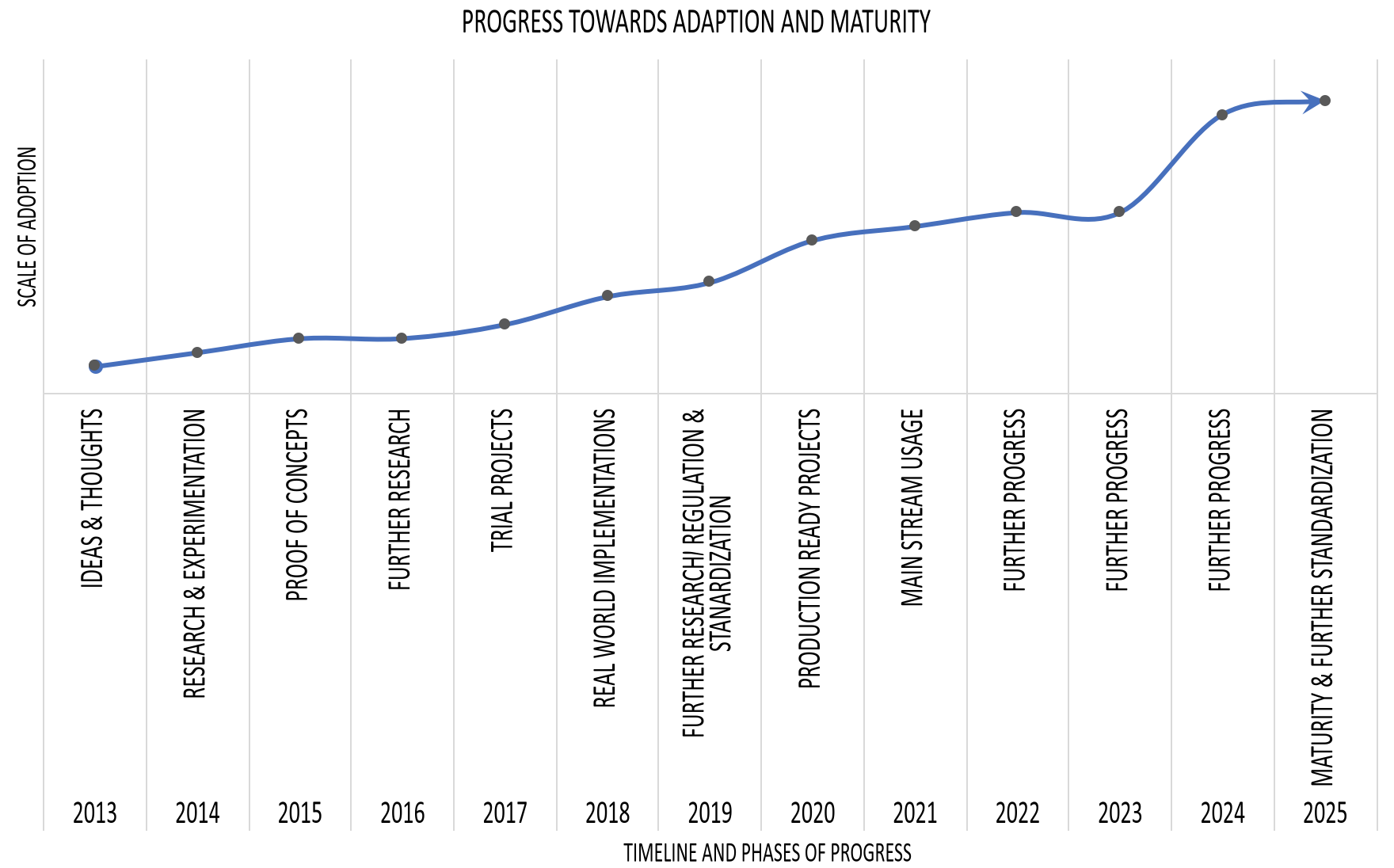With the invention of Bitcoin in 2008, the world was introduced to a new concept, which is now likely to revolutionize the whole of society. It is something that promises to have an impact on every industry, including but not limited to the financial sector, government, media, law, and arts. Some describe blockchain as a revolution, whereas another school of thought believes that it is going to be more evolutionary, and it will take many years before any practical benefits of blockchain reach fruition. This thinking is correct to some extent, but in my opinion, the revolution has already begun.
Many prominent organizations all around the world are already writing proofs of concept using blockchain technology, as its disruptive potential has now been fully recognized. However, some organizations are still in the preliminary exploration stage, though they are expected to progress more quickly as the technology matures. It is a technology that has an impact on current technologies too and possesses the ability to change them at a fundamental level.
If we look at the last few years, we notice that in 2013 some ideas started to emerge that suggested usage of blockchain in other areas than cryptocurrencies. Around that time the primary usage of blockchain was cryptocurrencies, and many new coins emerged during that time. The following graph shows a broad-spectrum outline of year wise progression and adaption trend of blockchain technology. Years shown on the x axis indicate the range of time in which a specific phase of blockchain technology falls. Each phase has a name which represents the action and is shown on the x axis starting from the period of IDEAS & THOUGHTS to eventually MATURITY & FURTHER STANDARDIZATION. The y axis shows level of activity, involvement and adoption of blockchain technology. The graph shows that eventually, roughly around 2025 blockchain technology is expected to become mature with a high number of users.

The preceding graph shows that in 2013 IDEAS & THOUGHTS emerged related to other usages of blockchain technology apart from cryptocurrencies. Then in 2014 some RESEARCH & EXPERIMENTATION started which led to PROOF OF CONCEPTS, FURTHER RESEARCH, and full-scale TRIAL PROJECTS between 2015 and 2017. In 2018 we will see REAL WORLD IMPLEMENTATIONS. Already many projects are underway and set to replace existing systems, for example, Australian Securities Exchange (ASX) is soon to become the first organization to replace its legacy clearing and settlement system with blockchain technology.
It is expected that during 2019 more research will be carried out along with some interest towards regulation and standardization of blockchain technology. After this, production ready projects and off the shelf products utilizing blockchain technology will be available from 2020 and by 2021 mainstream usage of blockchain technology is expected to start. Progress in blockchain technology almost feels like the internet dot-com boom of the late 1990s. More research is expected to continue along with adaption and further maturity of blockchain technology, and finally, in 2025 it is expected that the technology will be mature enough to be used on day to day basis. Please note that the timelines provided in the chart are not strict and can vary as it is quite difficult to predict that when exactly blockchain technology will become mature. This graph is based on the progress made in the recent years and the current climate of research, interest and enthusiasm regarding this technology which suggests that by 2025 blockchain technology is expected to become mature.
Interest in blockchain technology has risen quite significantly over the last few years. Once dismissed as simply geek money from a cryptocurrency point of view, or as something that was just not considered worth pursuing, blockchain is now being researched by the largest companies and organizations around the world. Millions of dollars are being spent to adapt and experiment with this technology. This is evident from recent actions taken by European Union where they have announced plans to increase funding for blockchain research to almost 340 million euros by 2020.
Another report suggests that global spending on blockchain technology research could reach 9.2 billion dollars by 2021.
There are various consortiums such as Enterprise Ethereum Alliance (EEA), Hyperledger, and R3, which have been established for research and development of blockchain technology. Moreover, a large number of start-ups are providing blockchain-based solutions already. A simple trend search on Google reveals the immense scale of interest in blockchain technology over the last few years. Especially, since early 2017 the increase in the search term blockchain is quite significant, as shown in the following graph:

Various benefits of this technology are envisioned, such as decentralized trust, cost savings, transparency, and efficiency. However, there are multiple challenges too that are an area of active research on blockchain, such as scalability and privacy.
In this book, we are going to see how blockchain technology can help bring about the benefits mentioned earlier. You are going to learn about what exactly is blockchain technology, and how it can reshape businesses, multiple industries, and indeed everyday life by bringing about a plenitude of benefits such as efficiency, cost saving, transparency, and security. We will also explore what is distributed ledger technology, decentralization, and smart contracts and how technology solutions can be developed and implemented using mainstream blockchain platforms such as Ethereum, and Hyperledger. We will also investigate that what challenges need to be addressed before blockchain can become a mainstream technology.
Chapter 18, Scalability and Other Challenges, is dedicated to a discussion of the limitations and challenges of blockchain technology.






























































